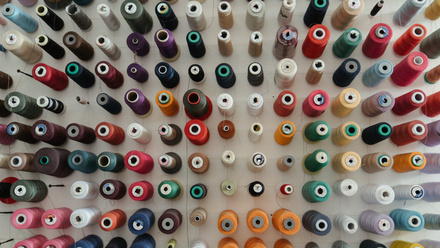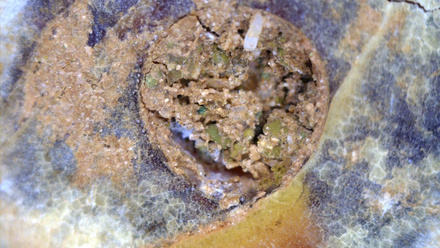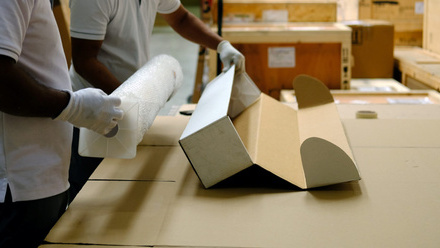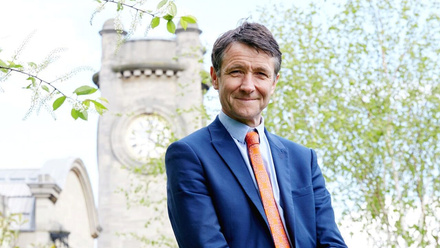Less is More
During this past summer, I had the opportunity to work as the Sustainability Intern for the Conservation of Fine Art program at Northumbria University. The department received funding for this role for the first time in 2021, which meant that it was a brand-new position and there was a lot of flexibility in how the internship would look. With the assistance of my supervisor, I created a plan for the structure of the internship which included both practical work and online research. My main goal was to improve, in some way, the sustainability of the working practices of the students in Burt Hall. As I found out, the best way to increase sustainability may not be to buy fancy new low-energy equipment or zero-impact solvents but to start simply with changing how we as students approach learning.
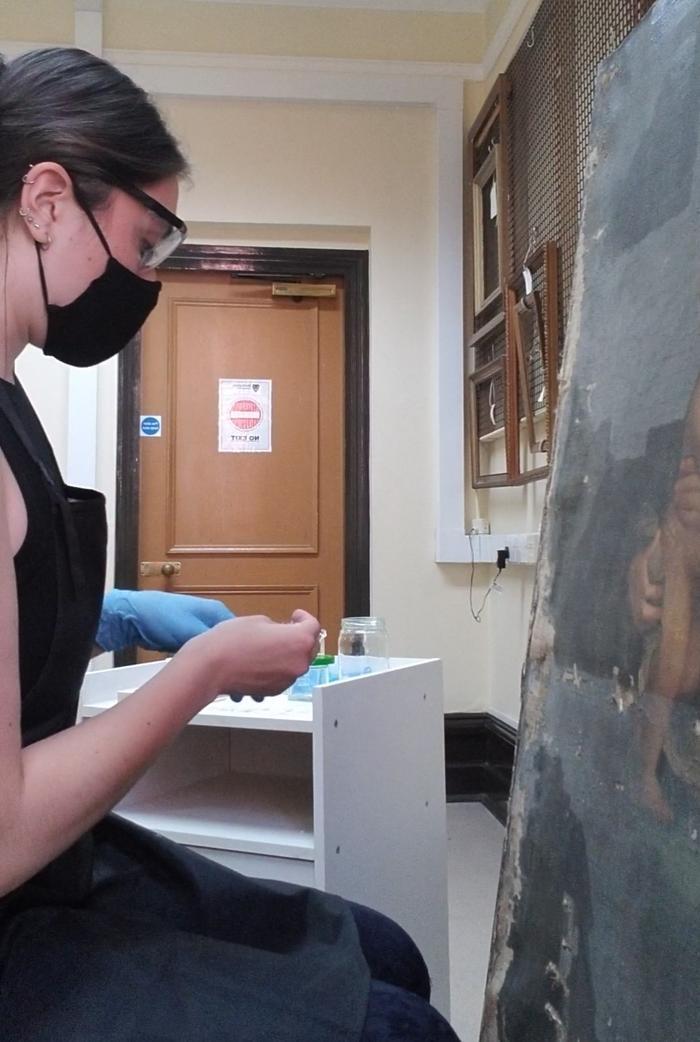
The main goal I wanted to achieve with this internship was to make approaching sustainability for those in arts and heritage conservation more straightforward, and easier to implement. An approach I use often in my life outside of conservation when I want to form a new habit is to make the habit as easy to perform as possible, so that doing it almost becomes second nature. There are thousands of students and professionals in the art and heritage conservation field who consume materials and energy in order to preserve heritage objects and art. If each of these conservators makes a small effort to improve the sustainability of their practice, and that small change becomes a habit, the summative effect on the sustainability of the field as a whole will be significant. While we may be preserving art and objects for future generations to enjoy, without an effort to be sustainable there may be no future for those objects to exist in.
Sustainability: Finding it Everywhere and Nowhere
To figure out the main challenges both students and professionals in conservation face when looking to improve their sustainability, I conducted interviews and sent out online surveys. Of the students who were polled, 63.3% indicated that much of the information on sustainability that they receive comes from other students in the form of group chat talks over apps like WhatsApp, Instagram posts or student groups such as the Conservation of Fine Art society at Northumbria. 54.5% indicated that webinars and talks run by organizations such as Icon as well as personal research on their own time also contributed heavily to the information they receive. This data indicates that peer-learning plays a significant role in an emerging conservator’s knowledge of sustainability, and suggests the importance of increasing student engagement with programs like the Student Ambassador Program (SAP) run by Sustainability in Conservation. This also demonstrates the importance of opportunities such as this internship for students to add to sustainability discourse themselves. By having a position such as this held by a current student in a conservatione program, other students can easily provide input, ask questions and have incentive to learn about sustainability through the support and guidance of the student undertaking the internship.
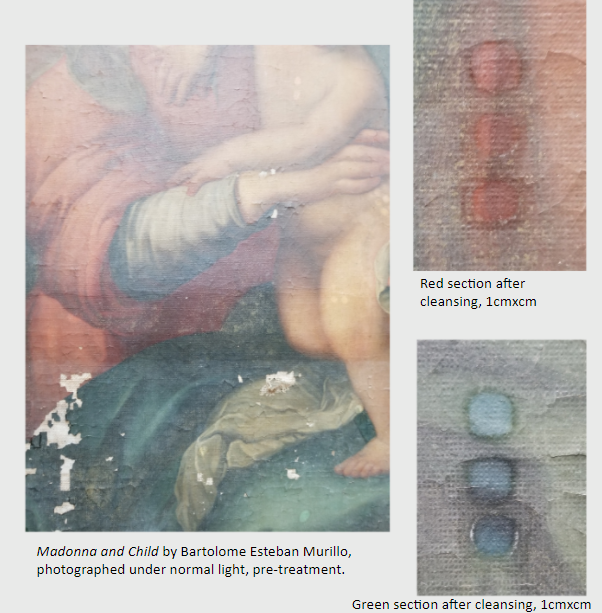
For the Conservation Professional
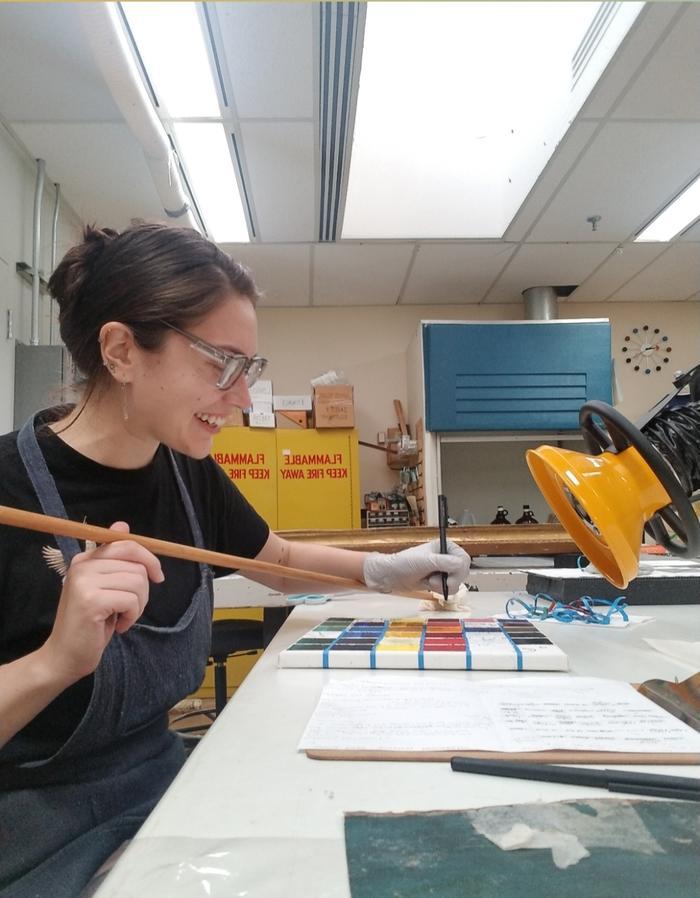
Peer-to-peer learning also seems to play a key role in many practicing conservation professionals understanding of sustainability. Several conservators I interviewed listed the Conservation Discussion List, a web chat and email platform available through Icon, as one of the main ways they are able to ask their peers questions and learn about sustainability. Increasing the amount of information that we share with each other on what we learn about sustainability is one way to make being more sustainable easier for us all. While many conservators have the desire to implement more sustainable materials and techniques, that fact that information on them can be difficult to piece together or find, and the overwhelming nature of searching through sustainability advice is a massive deterrent for working conservators with limited time. Often, conservators will choose materials based on information from the institutions they work in or from the preferences and advice of other, established conservators who recommend and trust certain products. For more sustainable materials to be widely used, it is important to build trust and comfort with using and trying such materials early on in conservator’s careers, as well as to write about our experiences with those materials to share with other conservators so that information on sustainability is more widely available and easier to find.
For the Conservation Student
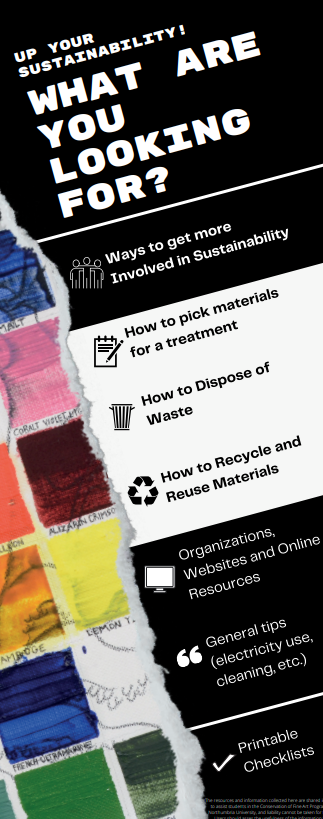
Many conservation programs teach students using standard, well-known and well-tested materials such as isinglass and disposable cotton swabs. I would suggest encouraging conservation students to also seek out and test materials and techniques based on their own research as well while they are learning. Experimenting in this way can increase the confidence of conservation professionals early on in their careers to work with more innovative materials and give them a better understanding of how to assess their treatments for material sustainability. In order to facilitate this, through this internship I produced a pdf booklet that students can use as a guide to research, compare and choose sustainable materials and techniques. The booklet covers six main topics and includes a checklist page that can be printed and used in the studio. My hope is that students use this booklet to explore sustainable techniques and materials, and implement those that they find easiest or most useful into their everyday practice. If students become comfortable using these tools during their studies, upon graduation a cohort of professional conservators who are able to lead sustainability initiatives and are knowledgeable about the environmental impact of different conservation treatments will enter the field and improve sustainability at the various institutions and businesses they go on to work with.
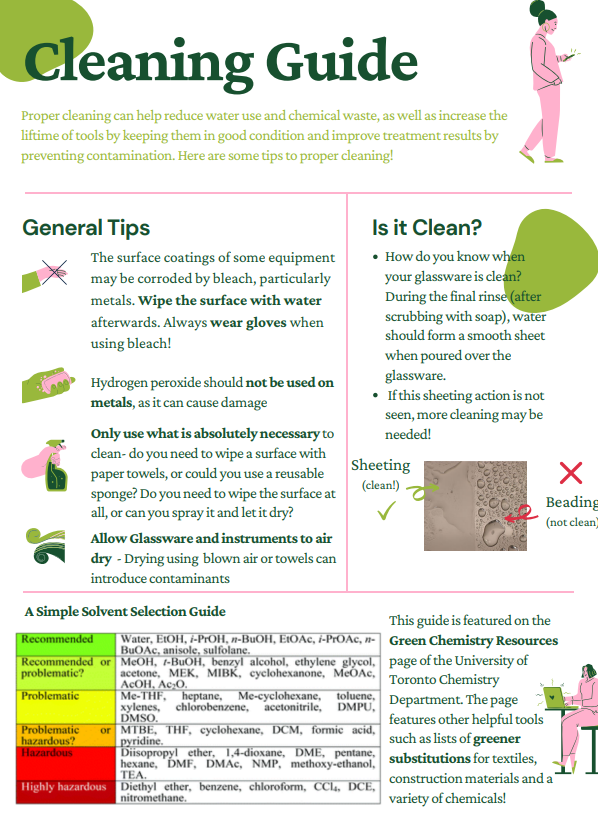
Conclusion
One of the most valuable things I learned through this internship is that for conservation as a field to become more sustainable, many conservators doing one or two small things to improve their practice or be involved with sustainability initiatives has the greatest impact and is also the most achievable way for change to occur. The best way for us to make a difference is one small step at a time at an individual level, and to be transparent about those steps with each other. Both professional conservators and student conservators are interested in and willing to improve the level of sustainability in the conservation field, and while as a field we have yet to fully understand and quantify our lasting environmental impact, we do each have the power to improve it.
I am grateful to the teaching team at Northumbria University for their assistance with this internship, as well as to my fellow conservation students in the program for their participation.
Additional thanks goes to Conservation Technician Sofia Pascual, Professor Nicky Grimaldi, Dawn Stoker at the Tyne & Wear Archives and Museums and Ylva Dahnsjo for their guidance, encouragement and support.
If you are looking for more information on sustainability, some easy-to use resources include the Theater Green Book Sustainable Productions Toolkit, the STiCH Carbon Calculator, the Climate Toolkit for Museums, Gardens and Zoos, the National Archives Solvent Solver and the ICCROM Our Collections Matter Toolkit.



